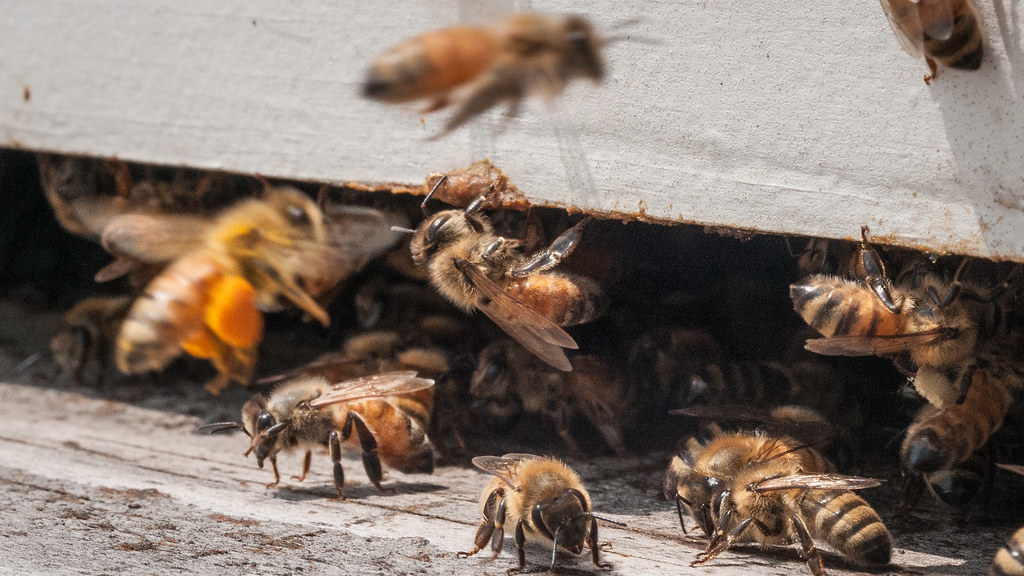
(Beyond Pesticides, July 28, 2020) With honey bees around the world under threat from toxic pesticide use, researchers are investigating a new way to track environmental contaminants in bee hives. This new product, APIStrip (Adsorb Pesticide In-hive Strip), can be placed into bee hives and act as a passive sampler for pesticide pollution. Honey bees are sentinel species for environmental pollutants, and this new technology could provide a helpful way not only for beekeepers to pinpoint problems with their colonies, but also track ambient levels of pesticide pollution in a community.
According to a study published by an international team of researchers, APIStrip has the potential to detect 442 pesticides as well as their primary break down products at levels lover than parts per billion. The strip, comprised of polymer, is what scientists describe as “a bee-proof, in-hive passive sampler.”
Current methods of sampling honey bee hives for contaminants is time-consuming, requiring removal of bees, pollen, honey or beeswax, and can result in significant hive disturbance. This new method was piloted by citizen-science beekeepers, and according to researchers proved to be a simple and effective tool that any interested citizen-scientist could employ.
Passive sampling of environmental contaminants by citizen scientists is becoming increasingly possible as new tools and techniques are developed. However, most are still in their investigative phase and not currently available for commercial development and distribution. Earlier this year, it was reported that researchers at North Carolina State (NC State) and Duke University were developing silicone monitoring devices (such as wristbands, collars, etc) that could be placed on dogs. “If we develop ways to correlate dog disease with their exposures over time, it may allow human-health professionals to mitigate these exposures for both species,” said Matthew Breen, Ph.D., at NC State.
The technique of using wristbands has already been trialed in California’s Salinas Valley, as part of an ongoing (CHAMACOS) study of the Salinas Evaluating Chemicals in Homes and Agriculture (COSECHA) project. The study was able to test for 72 different pesticides that teenage girls living in the region may be exposed to. Of those 72, researchers detected as many as 20 and an average of 8 pesticides over just one week of routine activity.
Beekeepers frequently have a difficult time testing their hives for pesticide residue. Often, a suspected pesticide kill will not be detected because the appropriate samples were not preserved in time. The U.S. Department of Agriculture’s Bee Research Laboratory, as the front page of its website highlights, is focused primarily on detecting parasites and disease, despite overwhelming evidence that pesticides are playing a critical role in colony failures throughout the country.
Having local data on contamination from honey bee hives could significantly expand understanding of the extent of pesticide pollution occurring in communities across the country. For example, one APIStrip piloted in Denmark found up to 40 different pesticides through the course of research. For more information on the pesticide threats honey bees continue to confront, see Beyond Pesticides’ BEE Protective webpage.
|

